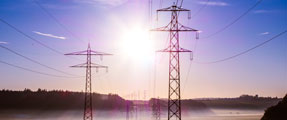On April 19, 2018, the Federal Energy Regulatory Commission (FERC) issued a final rule amending the pro forma Large Generator Interconnection Procedures (LGIP) and the Large Generator Interconnection Agreement (LGIA). The new rules represent the most significant changes to FERC’s generator interconnection process since 2003; however, FERC may revise some of the new rules because a number of parties sought rehearing which FERC granted on June 18, 2018.
This rulemaking commenced in 2017 and reforms a number of FERC’s rules pertaining to FERC-jurisdictional interconnections of 20 megawatts and above. These reforms, however, may be relevant to all interconnections as they may serve as a guidepost to reform FERC’s small generator interconnection rules or state-jurisdictional interconnections pertaining to qualifying facilities under the Public Utility Regulatory Policy Act (PURPA) or net metering. Additionally, a number of non-jurisdictional utilities rely on the FERC process to some extent.
FERC’s goal in adopting these new rules is to improve certainty and predictability, to promote transparency and access to information, and to streamline the interconnection process. Specifically, the FERC reforms
• Allow interconnection customers the option to construct their own interconnections;
• Allow customers to interconnect at a level lower than their generating facility capacity;
• Allow customers to operate generation facilities under short-term interconnection agreements before completion of the full interconnection process;
• Develop an expedited process for the use of surplus interconnection service;
• Adopt procedures to determine if a customer’s proposed technology change during the interconnection process constitutes a material modification;
• Use revised dispute resolution process;
• Publish a method for identifying contingent facilities;
• Provide customers access to the interconnection study processes and assumptions for maintaining network models;
• Include storage in as a generation facility; and
• Post interconnection study reporting requirements on a quarterly basis.
These reforms make modest improvements that benefit interconnection customers, but these improvements may change slightly upon conclusion of FERC’s rehearing. More information can be found at FERC’s docket no. RM17-8-000.
Sanger Law represented the Renewable Energy Coalition, which advocates for reasonable PURPA policies on behalf of renewable QFs located in in Oregon, Idaho, Montana, Washington, Utah, and Wyoming.
Disclaimer
These materials are intended to as informational and are not to be considered legal advice or legal opinion, nor do they create a lawyer-client relationship. Information included about previous case results does not assure a similar future result.


